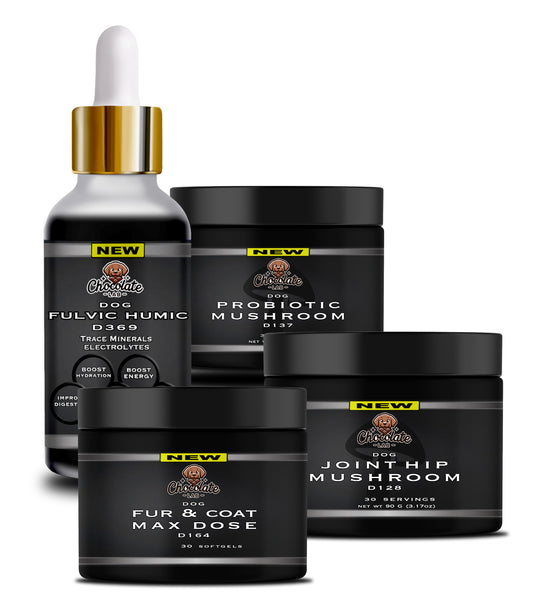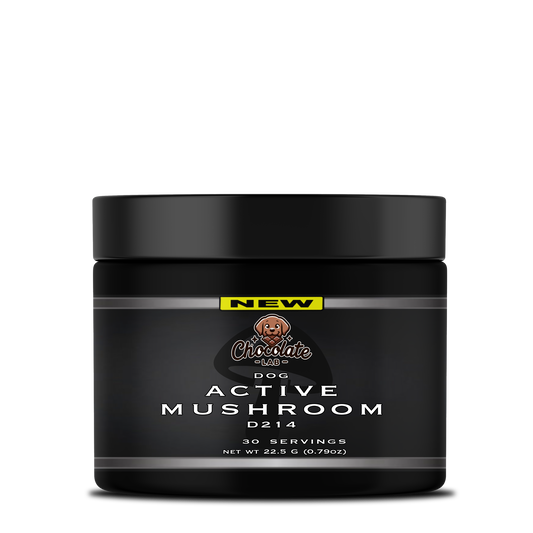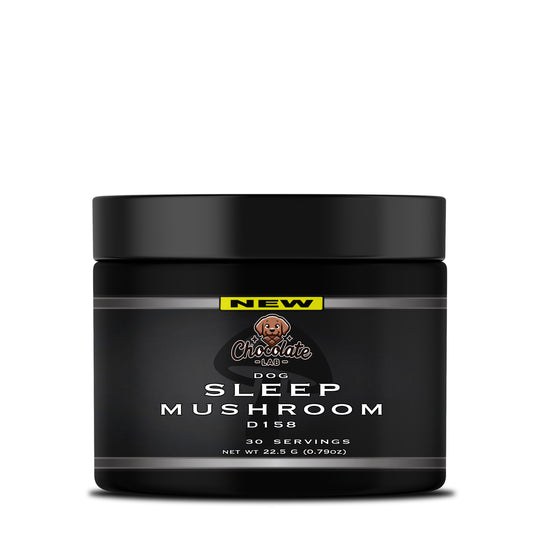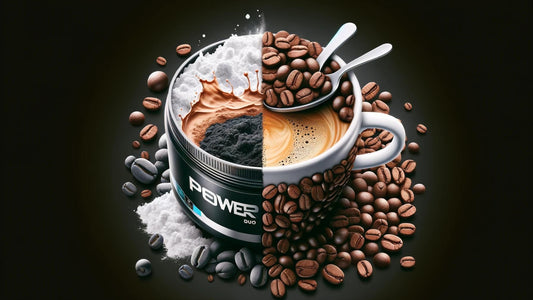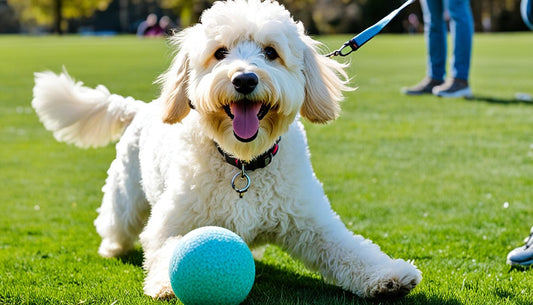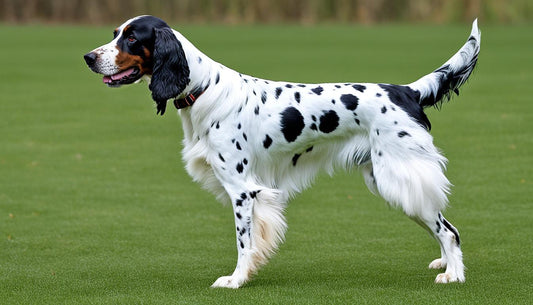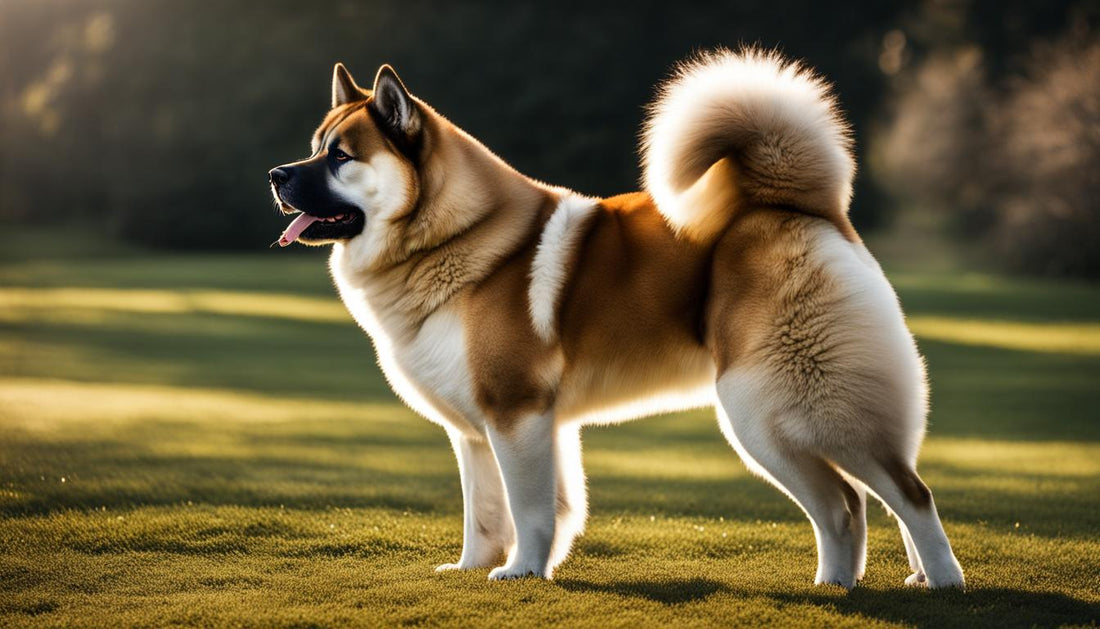
American Akita: A Guide to the Majestic Breed
Regal, powerful, and wrapped in a cloak of mystery – the American Akita stands as a pinnacle of canine magnificence. But beyond their commanding presence, what are the American Akita characteristics that enthusiasts and potential dog owners should know about? In this introduction to the majestic breed, we'll uncover the aspects that make the Akita American dog not just a pet, but a noble companion with a legacy of loyalty and strength.
Key Takeaways
- Understanding the unique characteristics that define the American Akita's presence
- Insights into the breed's loyal and dignified temperament
- An overview of the American Akita's physical attributes that command respect
- The importance of comprehending this breed's specific care requirements
- A brief introduction to the American Akita's historical roots and evolution
Introducing the American Akita: A Breed Overview

The Akita dog, with its dignified stature and profound loyalty, captures the hearts of dog lovers around the world. Originating from the rugged terrains of Japan, this breed has evolved into the striking American Akita we know today. Equally at home in apartments or sprawling estates, the Akita's versatility makes them a sought-after companion for many. Known for their bear-like appearance, quiet demeanor, and watchful eyes, the strength and serenity of this majestic breed offer a unique blend few other breeds can.
As one explores the possibility of becoming an American Akita owner, it's essential to grasp the breadth of the breed’s characteristics. These dogs are more than their stunning physical attributes; they carry a history of nobility and serve as a symbol of strength. For the uninitiated, a simple glance at an American Akita can be all it takes to fall for their charms, but understanding their needs and personality is paramount for a harmonious relationship.
Those considering adding American Akita puppies to their family will be embarking on a rewarding journey. These pups require a compassionate yet firm hand in their upbringing; they are not only learning how to be a pet but are steeped in a pedigree that favors intelligence and independence. This breed overview serves as a primer on what to expect and how to best prepare for life with an Akita—from puppyhood aesthetics to the enduring strength of an adult. Let’s step into the world of the American Akita, a breed that offers so much more than meets the eye.
- Revered for their loyalty and courage
- Bear-like stature and profound strength
- Silent watchers and devoted protectors
- Intelligence coupled with an independent spirit
- Need for a clearly established pack hierarchy
In a world where the companionship of a dog is unmatched, the American Akita stands tall. They are not merely pets but are esteemed companions for those who seek a profound bond built on mutual respect and understanding.
History of the Akita: Ancestry and Origination

The Akita breed holds a profound place in the history of Japan, where its lineage is deeply rooted. Known for their unwavering loyalty and dignified character, Akitas have traveled a long path from their origination to become the cherished breed we admire today. This journey reflects the transformation of an esteemed hunting companion into an iconic symbol of familial loyalty.
The Japanese Roots of the Akita Dog
The Akita's ancestry can be traced back to the Akita Prefecture of northern Japan, where the breed derived its name. Originally bred for hunting bears, boars, and deer, this powerful breed was revered by the aristocracy for its prowess and was often found in the company of samurais. The Akita's robust build and keen senses made them indispensable in the rugged, snow-covered terrains of their homeland.
From Hunting Dog to Family Companion: The Evolution of the American Akita
Post World War II saw the Akita's introduction to the United States, where it gradually evolved into the American Akita we know today. Soldiers returning from Japan brought these impressive dogs back to America, where their popularity began to soar. Through selective breeding and a focus on enhancing specific traits, such as a more robust physique and a wider range of colors, the American Akita began to diverge from its Japanese counterpart. The breed's transformation from a noble hunting dog to a beloved family companion is a testament to its versatility and adaptive nature.
The Unique Characteristics of the American Akita

The American Akita stands out among dog breeds not only for its noble stature and temperament but also for its distinctive variety of coat colors and textures, which add to the breed's physical appeal and personality. Among the array of American Akita colors, owners and breeders may find a palette spanning from pure white to deep brindle, each hue carrying its own unique set of genetics and breed-specific traits. It is this spectrum of colors that helps make every American Akita unique.
A particularly rare and exquisite variant within the breed is the long coat American Akita. Though not as common as the short-coated variety, the long coat American Akita possesses a striking appearance. The longer fur adds a majestic flair but also calls for a dedicated grooming regimen to maintain a healthy coat and avoid tangling. Let's explore the various American Akita colors and the special considerations for the long coat variety:
| Color | Appearance | Frequency | Grooming Needs |
|---|---|---|---|
| White | Solid, without markings | Common | Regular brushing to maintain coat and avoid staining |
| Brindle | Striped pattern, in various colors | Variable | Seasonally heavy shedding; frequent brushing |
| Pinto | White base with large patches of color | Common | Brushing several times a week; more during shedding |
| Red Fawn | Reddish-brown with black overlay | Common | Regular grooming to maintain vibrant coat color |
| Long Coat | Luxurious and fluffy | Rare | Daily brushing; professional grooming recommended |
It is worth noting that the American Kennel Club recognizes all colors in the American Akita. Show dogs are judged primarily on physical structure and breed standards rather than coat color. However, for long coat American Akitas, adherence to breed standards regarding coat length is crucial for show eligibility.
The significance of these colors and coat types extends beyond aesthetics. Prospective breeders and owners must consider the genetic health implications when selecting a dog. Certain colors may be linked to specific health conditions, and as is the case with long coats, may require additional care and upkeep. Regardless of these factors, the personality and temperament of the American Akita remain unwaveringly strong and loving.
Physical Attributes of the Akita Breed

The Akita is renowned for its impressive stature, immediately commanding attention with its robust frame. This breed embodies strength and balance, which are the foundations of its imposing presence. As we delve into the attributes that define these noble canines, their physicality emerges as a central aspect of their identity, rooted in both their history and breed standards.
Akita Size and Build: A Sturdy Frame
Reflecting their roots as a powerful working breed, the Akita boasts a size that is both functional and awe-inspiring. An adult American Akita's size can vary, but males generally stand between 26 to 28 inches at the shoulder, with females slightly smaller at 24 to 26 inches. Weight can range from 70 to 130 pounds, emphasizing their solid build. Their substantial bone structure, deep chest, and well-muscled frame contribute to an appearance of vigor and unmatched strength.
Coat Types and Varieties: Exploring American Akita Colors
The American Akita's coat is a defining feature that captivates and impresses. A variety of colors embellish the breed, with coats occurring in pure white, pinto, and eye-catching shades of brindle. The American Akita brindle pattern, in particular, is a marvel of nature, characterized by streaks and swirls that resemble the coat of a tiger. This striking coloration ranges from light to dark and can include a mix of black, brown, red, and fawn, each interwoven in a unique display. With a thick double coat that offers protection from the elements, the American Akita is suited for a variety of climates, a nod to their versatile heritage.
The Distinctive American Akita Face and Markings
The face of the American Akita is perhaps one of its most distinctive features. With a broad head and small, deep-set eyes, the breed expresses intelligence and alertness. The markings on their face can be just as unique as their coats, with some displaying a mask-like coloration or striking contrasts that accentuate their dignified expression.
As we appreciate the beauty and strength of the American Akita, their biology and morphology echo the breed's remarkable history as both a companion and protector. It's important for prospective owners to understand not just the Akita's size and appearance, but the deeper essence that these physical attributes represent.
Caring for an American Akita: Health and Grooming

Ensuring the well-being of your long-haired American Akita requires a commitment to routine health monitoring and a grooming regimen tailored to their unique coat. With their calm and dignified Akita temperament, these dogs can become cherished companions when their care needs are met with dedication and knowledge.
Essential Health Checks for Akita Dogs
Regular veterinary check-ups are vital for maintaining the health of your Akita. These health screenings should include hip dysplasia evaluations, eye exams to prevent progressive retinal atrophy, and thyroid function tests. It's also important to keep up with vaccinations and parasite prevention to safeguard your Akita's well-being. As part of their comprehensive care, Akitas may require breed-specific screenings due to their genetic predispositions.
Grooming Practices for American Akita Puppies and Adults
The luxurious coat of a long-haired American Akita is undeniably beautiful but demands regular care to stay in top condition. Begin grooming practices early to help your Akita grow accustomed to brushings and baths. To manage their dense fur, it's recommended to brush their coat several times a week, increasing frequency during seasonal shedding times. Akitas, particularly those with long hair, may benefit from professional grooming services to handle any tough mats or trimming requirements. Beyond aesthetics, consistent grooming allows owners to check for skin issues, ticks, or other concerns that could impact the Akita's health.
Akita Temperament: Understanding Their Personality

The Akita American dog is known for its dignified and reserved temperament. Akitas are often seen as complex characters, at once wary of strangers yet devoted to their families—a trait that makes them excellent watchdogs. Potential Akita breeders and owners are typically drawn to these dogs for their intelligence, which is one of the standout characteristics of the breed. However, this intelligence also means Akitas require thoughtful engagement and firm yet gentle training to thrive.
Their loyalty is the stuff of legends, with the famous story of Hachiko being a testament to the breed's unwavering faithfulness. The strong bond that Akitas form with their owners is not to be underestimated; it affects the dog-owner relationship profoundly. It's this loyal disposition that has made the breed cherished among dog enthusiasts and families alike.
Akitas have a strong sense of independence, which can sometimes be mistaken for aloofness. It is essential for Akita breeders and owners to understand this aspect of their personality, as it requires a specific approach to training and socialization. Despite this independence, Akitas have been known to display a playful and loving side, especially towards their own family.
One cannot talk about the Akita without mentioning their quiet nature. These dogs are not known for barking incessantly; instead, they tend to be quite and observant, only vocalizing when they deem it necessary. This contemplative nature should not be misinterpreted as a lack of awareness; on the contrary, the Akita is always alert and aware of their surroundings.
A potential owner should be aware that the Akita temperament might not make them suitable for inexperienced dog owners. They require a patient, assertive figure who can establish leadership and a structured environment. Below is a summary of the key traits any would-be Akita owner or breeder should embrace and understand:
- Intelligence: Akitas are highly intelligent, responding well to training that includes mental stimulation.
- Loyalty: They are known for their loyalty, making them excellent companions.
- Independence: The breed is known for being independent, which can sometimes require a firm training approach.
- Guardian Instinct: Akitas have natural protective instincts, making them vigilant watchdogs.
- Reserved Nature: Typically reserved around strangers, they require proper socialization from a young age.
For current or prospective Akita American dog owners, embracing these traits will lead to a rewarding companionship. With the right balance of discipline, affection, and understanding, Akitas can be an addition to one's life that brings immense fulfillment and a sense of security.
Training Requirements for the American Akita

The American Akita is a breed renowned for its courage, strength, and loyalty—but these noble characteristics come with a unique set of training requirements. Proper training is essential from puppyhood to ensure that these dogs grow into well-behaved adult companions. Understanding and addressing the American Akita's independent streak is a crucial part of this process, and with consistency and patience, owners can cultivate the positive aspects of their Akita's bold nature.
Starting Right: Training American Akita Puppies
Training for an American Akita should begin the moment the puppy arrives in its new home. These formative weeks are critical for setting the groundwork for obedience and socialization. Structured training sessions that incorporate positive reinforcement techniques can help to harness an Akita puppy's innate qualities effectively. Early socialization with different people, animals, and environments is also key to developing a well-rounded temperament in this breed.
Addressing the Akita's Independence: Training Techniques
Akitas are known for their strong-willed nature, which can pose a challenge during training. They often require a firm but understanding approach that builds on mutual respect. Utilizing methods such as consistent command reinforcement and reward-based incentives will engage an Akita's intelligent mind. Owners should remain patient and persistent, and never resort to harsh discipline, which can damage the bond between dog and owner.
- Introduce new commands progressively and with clarity.
- Ensure training sessions are short and focused to retain the Akita's attention.
- Be consistent with rules and boundaries to guide their strong-willed tendencies.
- Use praise and treats to motivate and reward desirable behaviors.
- Establish yourself as the pack leader to tap into the Akita's natural instinct to follow.
Adhering to these training strategies can turn the challenge of the Akita's independence into an advantage, fostering a relationship where the dog's strong characteristics are expressed in positive and controlled ways. In combining these techniques with the understanding of the American Akita's characteristics, owners can enjoy the rewarding journey of raising a well-trained and loyal canine companion.
Exercise and Activity Needs for the Akita Dog

A well-rounded exercise routine is imperative for maintaining the health and happiness of the American Akita. Considering the Akita size, ample daily exercise isn't just a bonus—it's a necessity. Akitas are energetic and have a history of working alongside humans, meaning they have a natural propensity for activity. Keeping this in mind helps ensure that American Akita puppies develop into well-adjusted, healthy adults.
The Importance of Daily Exercise
Daily physical activity plays a crucial role in managing the Akita's muscular build and preventing boredom that can lead to destructive behavior. Consistent exercise helps to channel the breed’s energy positively and supports joint health, which is particularly important given the significant size of Akitas. It also aids in weight management, crucial for avoiding the health issues associated with canine obesity.
Interactive Games and Mental Stimulation for the American Akita
Physical exertion should be accompanied by mental challenges to keep the intelligent American Akita engaged. Interactive games that stimulate their problem-solving skills can provide mental enrichment. Utilizing toys that dispense treats when a problem is solved or incorporating tracking games that appeal to their innate hunting instincts are excellent ways of keeping their mind as active as their body.
- Tug-of-war strengthens muscles and satisfies the Akita's desire for robust play.
- Fetch and running activities are ideal for cardiovascular health and making use of their substantial stride.
- Agility training can improve coordination, focus, and create a bond between pet and owner.
- Hide-and-seek style games with toys or treats can sharpen cognitive and scent-tracking abilities.
Ensuring a regimen that meets their activity level is fundamental for the American Akita. Young dogs, in particular, benefit from the steady buildup of exercise routines to match their growth. Owners should always be conscious of their Akita's physical limits to avoid strain, especially during their formative American Akita puppies stage. Through a blend of physical and mental engagements, Akitas can achieve a balanced lifestyle, aiding in their development into strong, composed, and cheerful companions.
American Akita: Integrating into Your Lifestyle

When considering the addition of an American Akita to your home, understanding the breed's Akita temperament and the vast array of Akita colors is essential for a harmonious integration. This majestic breed, known for its loyalty and dignified nature, can adapt to a variety of living situations, but it is important to align their characteristics with your lifestyle to ensure a perfect match.
Whether you reside in a spacious house with a backyard or an apartment, the American Akita's temperament should influence your decision. While these dogs are adaptable to space limitations, their need for daily exercise and mental stimulation must be taken into account. As potential guardians of your home, they thrive in environments where they can keep a watchful eye and stay close to their family members.
Akita colors, ranging from pure white to deep brindle, not only add to the visual appeal but can also influence their fitting into your home's aesthetics. Below is a guide to help you understand how to integrate the various Akita colors into your living environments.
| Color | Living Environment Suitability | Lifestyle Considerations |
|---|---|---|
| White | High visibility against most backgrounds | Higher grooming visibility, requiring more frequent cleaning |
| Brindle | Blends with natural, earthy home settings | Masks shedding hair, suitable for active outdoor spaces |
| Pinto | Striking in spacious, well-lit areas | Can require additional grooming for a pristine look |
| Red Fawn | Bright and warm, best in sunny homes | Vibrant color may require thoughtful aesthetic home pairing |
As you prepare to welcome an American Akita into your life, consider the breed's need for a firm but patient owner, capable of providing consistent leadership. The breed's independent nature calls for an owner with an understanding of canine psychology, who can provide regular training and socialization.
Remember, whether you're drawn to the stoic beauty of brindle or the purity of the glistening white coat, the Akita's temperament should be a primary factor in your selection process. Regardless of living space or preferred coloration, responsible ownership and a commitment to meeting their emotional and physical needs will cultivate a fulfilling relationship with this noble breed.
Common Health Issues Among Akita Dogs

When it comes to the majestic American Akita, particular vigilance toward health is vital for preserving their quality of life. Recognizing the breed's susceptibility to certain conditions, especially in stunning color variations such as the American Akita brindle, is part of responsible ownership. This section aims to guide owners in identifying early signs of potential health issues, as well as strategies for managing the health of their Akita American dog throughout its lifespan.
Recognizing Health Concerns Early
Diligent observation plays a key role in identifying health concerns in American Akitas. Some issues may be visually apparent, such as changes in coat quality or unexplained weight gain. Watchfulness for less obvious signs like lethargy, reduced appetite, or unusual behavior is equally important. Establishing a routine of regular health checks with your veterinarian can aid in early detection and treatment of conditions prone to the breed.
Long-Term Health Management for Akitas
Managing the well-being of an American Akita goes beyond responding to health issues as they arise. It involves adopting a proactive approach to their overall care. This includes regular exercise tailored to their needs, a balanced diet, and mental stimulation to maintain their welfare. Additionally, understanding the genetic implications of different coat types, particularly for those with the brindle pattern, can inform tailored health strategies for Akitas.
| Condition | Symptoms | Preventive Measures | Management |
|---|---|---|---|
| Hip Dysplasia | Limping, difficulty in rising | Appropriate exercise, weight control | Physical therapy, medication, surgery in severe cases |
| Progressive Retinal Atrophy | Night blindness, dilated pupils | Genetic testing of breeding stock | No cure, but antioxidants may slow progression |
| Hypothyroidism | Weight gain, coat changes, lethargy | Regular veterinary check-ups | Thyroid hormone replacement therapy |
| Sebaceous Adenitis | Scaly skin, hair loss | Regular grooming and skin checks | Topical treatments and dietary supplements |
| Bloat (Gastric Dilatation Volvulus) | Swollen abdomen, drooling, distress | Small frequent meals, avoid exercise after eating | Emergency veterinary attention necessary |
Arming yourself with knowledge of these conditions is a first step toward safeguarding the health of your Akita. It's important, however, to work closely with veterinary professionals who can provide personalized care for your Akita, taking into account its lifestyle and unique needs as an Akita American dog.
The American Akita Diet: Nutrition and Feeding Habits

To maintain the distinct American Akita characteristics, it is imperative to provide a diet that supports their robust health, particularly those with a beautiful long coat American Akita fur. A well-balanced diet tailored to their specific needs through various life stages is central to their overall wellness.
Choosing the Best Food for Your Akita's Age and Lifestyle
Selecting the appropriate food for your American Akita involves considering their age, weight, activity level, and health status. Puppies, for instance, require a diet rich in protein to support growth, while adults need balanced nutrition to maintain their health and vitality. For senior Akitas, specialized food that is easier to digest and care for aging joints can be crucial.
| Life Stage | Food Type | Key Nutrients | Feeding Frequency |
|---|---|---|---|
| Puppy | High-quality puppy food | Rich in protein for growth | Three to four times a day |
| Adult | Premium adult dog food | Protein, fats, carbohydrates in balance | Two times a day |
| Senior | Senior-specific formula | Enhanced with joint support supplements | Two times a day |
Matching food quality with physical requirements ensures that every Akita, especially those with a long coat American Akita lineage, receives the nutrients necessary to keep their coat lush and their bodies healthy.
The Role of Treats and Supplements in an Akita's Diet
Beyond regular meals, treats and supplements can play a beneficial role in an Akita's diet. Treats, when given in moderation, can aid in training, serving as a reinforcement tool. Supplements, on the other hand, should be considered to address specific health needs or deficiencies.
For example, Akitas with long coats may benefit from omega fatty acid supplements to promote a healthy, shiny coat. Joint supplements can also be of immense help, particularly for this large breed that is prone to hip dysplasia.
- Omega fatty acids for skin and coat health
- Glucosamine for joint support
- Probiotics for digestive health
- Antioxidants for immune support
Understanding the vital role of proper nutrition in sustaining the key American Akita characteristics is a fundamental aspect of caring for this noble breed. Feeding a balanced diet, giving appropriate treats, and ensuring beneficial supplements if required will help your American Akita live a long, thriving life.
Finding Reputable Akita Breeders and Adoption Options

Embarking on the journey to bring an American Akita puppy into your home requires careful consideration of where to obtain your new companion. Choosing between reputable Akita breeders and exploring adoption alternatives can have a significant impact on the well-being of your future pet. This section will provide guidance on assessing ethical breeding practices while also discussing the virtues of giving a second chance to Akitas through rescue organizations.
Researching Akita Breeders: Ensuring Ethical Practices
When searching for Akita breeders, it is imperative to ensure that the breeder follows ethical and humane breeding practices. Prospective Akita owners should embark on a thorough vetting process, which involves visiting the breeding facility in person, requesting health clearances for both puppy parents, and observing the living conditions. Look for breeders who prioritize the health and socialization of American Akita puppies and who are transparent about their breeding practices.
- Ask for references from previous buyers to gauge the breeder's reputation.
- Ensure that the breeder provides comprehensive documentation for health checks and vaccinations.
- Engage with the puppies directly to assess their temperament and environment.
- Inquire about the breeder’s ongoing support throughout the puppy’s life stages.
Adoption and Rescue: Giving an Akita a Second Chance
Adopting an Akita can be a deeply rewarding experience, providing a home to a dog in need. Rescue organizations and shelters often have Akitas and American Akita puppies that are in search of a loving family. While some rescue Akitas may require extra care due to past neglect or trauma, the transformative power of a nurturing environment can reveal the true, loving nature of this dignified breed.
- Connect with Akita-specific rescue organizations as they understand the breed's specific needs.
- Consider the benefits of adopting an adult Akita who may already be trained and socialized.
- Remember that rescue Akitas deserve patient and understanding adopters willing to invest time in their rehabilitation.
- Familiarize yourself with the dog’s history and behavior as provided by the rescue to ensure a good match.
Ultimately, whether you choose a breeder or adopt, responsible ownership begins with making an informed decision that benefits both you and the Akita's well-being. With commitment and love, American Akitas are poised to become loyal and joyous members of their forever homes.
American Akita vs. Japanese Akita: Understanding the Differences

The American Akita and the Japanese Akita are two breeds that hold a shared history, yet over time they have developed distinctive characteristics that set them apart. While they may look similar to those unfamiliar with the breed, enthusiasts appreciate the nuanced differences. As we dive into the traits unique to each, from the majestic long-haired American Akita to the varying Akita colors, we can appreciate the diversity and beauty within this noble lineage.
Distinctive Traits of the American Akita
The American Akita is a breed known for its formidable presence. It often exhibits a bear-like stance, with a sturdy body and a broad head, giving it a robust appearance. Among the most prized varieties is the long-haired American Akita, whose luxurious fur adds an additional layer of grandeur to its already impressive physique. Moreover, the range of Akita colors is broader in the American version, which includes pinto patterns and a more varied brindle palette, offering an array of choices for potential owners.
| Feature | American Akita |
|---|---|
| Size | Larger and more robust |
| Coat Type | Includes both short and long-haired varieties |
| Color Varieties | Broad spectrum, including pinto and multiple brindle hues |
| Head Shape | Broad and bear-like |
| Temperament | Confident and assertive; requires firm training |
Recognizing the Japanese Akita
The Japanese Akita, or Akita Inu, typically has a more fox-like appearance, with a smaller, more triangular head and a lighter frame. In contrast to the American variant, the Japanese Akita has a more limited color palette, focusing primarily on red, fawn, sesame, brindle, and pure white, occasionally accented with a facial mask. The coat of the Japanese Akita is exclusively short-haired, dense, and plush, designed to protect them from the harsh climates of their native region in Japan.
| Feature | Japanese Akita |
|---|---|
| Size | Smaller and more fox-like |
| Coat Type | Short-haired only |
| Color Varieties | More restricted, without pinto variation |
| Head Shape | Smaller and triangular |
| Temperament | Calm and dignified; perhaps less dominating |
By understanding the distinctions between these two breeds, from the long-haired American Akita to the pure and engaging Akita colors of both variants, enthusiasts and potential owners can better appreciate the lineage and decide which breed may suit their lifestyle and preferences better.
Conclusion

As we draw our exploration of the Akita breed to a close, it is clear that these noble canines stand out not only in stature but in the grace of their temperament. The regal presence of the Akita American dog encompasses a history rich with loyalty, valor, and resilience—a true blend of stoic guardian and affectionate family member.
Throughout our discussion, we've acknowledged the depth of the Akita's character. From their independence to their quiet confidence, the Akita temperament has proven to be as complex as it is captivating. And while their physical prowess may be the first to catch an onlooker's eye, it is the heart and soul of the Akita that forever captures the affections of those who know them well.
To fully appreciate the Akita breed is to understand the devotion required in nurturing this living legacy. Their size and strength call for a confident owner, someone who understands the steadfast heart behind the broad muzzle and gentle eyes. It's an alliance forged on mutual respect and comprehension of the dog's intrinsic nature.
As custodians of such an esteemed breed, we embrace the full spectrum of what these dogs have to offer. From the lush diversity of coat types that span the palette of Akita colors to the serene guardianship they provide, each aspect enriches the human-canine bond. Here, in harmonious coexistence, the American Akita finds a haven, and in return, bestows upon us the unwavering fidelity of their kind.
May this compendium serve not merely as a guide but as a testament to the Akita—a breed that demands our understanding and respect. They are more than pets; they are the embodiment of a profound heritage that, when revered, elevates the life of every owner fortunate enough to be chosen by an American Akita.
Additional Resources and Next Steps for Akita Owners and Enthusiasts
For those captivated by the dignified aura of the American Akita, your journey with these magnificent canines is only beginning. Whether you’re a seasoned owner or considering welcoming an Akita into your life, a wealth of resources awaits to deepen your understanding and connection with the breed. Books on the breed's heritage, care guides curated by seasoned Akita breeders, and engaging documentaries are fantastic avenues for further exploration. Detailing everything from the intricate details of American Akita puppies' care to the characteristics dictated by Akita size, such materials provide a comprehensive look into the heart of the breed.
Moreover, the thriving online community of Akita enthusiasts offers a repository of shared wisdom and support. From breed-specific online forums where you can exchange stories and advice, to social media groups that celebrate every facet of Akita life, the camaraderie among Akita owners is truly remarkable. Local clubs and national organizations often organize events and meetups, allowing for invaluable first-hand experience with Akitas of all ages and sizes. These gatherings are not only fantastic for socializing your Akita but also provide an opportunity to meet reputable Akita breeders and discover potential playmates for your furry friend.
Lastly, attending dog shows and breed-specific exhibitions can offer insights into the fascinating world of canine competition and breed standards. Even if you do not aspire to show your Akita, observing healthy, well-trained Akitas in action can serve as inspiration for your own journey in raising an Akita. These experiences underscore the importance of responsible breeding and ownership, and celebrate the graceful power of the breed.
Empower your relationship with your Akita by embracing the knowledge and fellowship offered by the global Akita community. By engaging with these resources, adopting best practices, and fostering connections, you'll navigate the rewarding path of Akita stewardship with confidence.
FAQ
What defines the American Akita's characteristics?
The American Akita is known for its strong, bear-like build, intelligence, and loyalty. They are calm, dignified, and deeply affectionate with family members. A standout feature is their plush tail that curls over the back, and they often have a bold and fearless temperament.
How is the American Akita different from the Akita Inu?
While they both originate from Japan, the American Akita is generally larger, with a wider range of colors and more substantial bone structure. The American Akita does not have the strict color patterns that its Japanese counterpart has, and it has a more bear-like head compared to the fox-like appearance of the Akita Inu.
What are the coat types and colors of the American Akita?
American Akita coats can range from short to a longer coat seen in the long coat American Akita. They come in various colors including brindle, white, black, chocolate, and pinto. Their undercoat is thick and soft, with a harsher outer coat that can be straight or slightly curly.
Can American Akitas adapt well to different living environments?
With proper socialization and training, American Akitas can adapt to a variety of living situations. However, due to their size and exercise needs, they thrive best in homes where they have plenty of space to move around. It is also important for them to be part of the family, not isolated outdoors.
What kind of temperament can I expect from an American Akita?
American Akitas are known to be faithful companions that are affectionate with their families. They can be reserved and even standoffish with strangers, and exhibit a protective nature. They require early socialization to get accustomed to a variety of people and settings.
Are American Akitas good with children?
American Akitas can be good with children, especially if they are raised together. However, due to their large size and strength, interactions should always be supervised. It's crucial to teach children how to interact with the dog properly to prevent any accidental injuries.
What exercise requirements do American Akitas have?
American Akitas require daily exercise to maintain their physical and mental health. They benefit from walks, playtime in a secure area, and mental stimulation through training and interactive games. The amount of exercise will vary with each dog's individual need and energy levels.
What are common health issues to look out for in the breed?
American Akitas can be prone to certain inherited conditions such as hip dysplasia, hypothyroidism, and progressive retinal atrophy. Regular veterinary check-ups and being aware of these conditions can help in early detection and management.
What should I look for when choosing an American Akita breeder?
Look for reputable breeders who prioritize the health, temperament, and well-being of their dogs. They should offer transparent health screening records for the puppies and their parents, follow ethical breeding practices, and be knowledgeable about the breed. Visiting the facility and meeting the puppies and their parents is also beneficial.
How should I go about training my American Akita?
Training an American Akita requires consistency, patience, and a firm but gentle hand. They respond well to positive reinforcement techniques. Starting training early is essential, and it's important to establish yourself as the leader to manage their independent nature.
What grooming is required for an American Akita?
American Akitas need regular grooming to manage their thick double coat. They should be brushed several times a week to reduce shedding and prevent matting, especially the long-haired variety. They'll also require bathing, nail trimming, and ear cleaning as part of their routine care.
Can American Akitas be apartment dogs?
While American Akitas can live in apartments, they do best in homes with more space. If residing in an apartment, it's essential to provide them daily exercise, mental stimulation, and ensure they are well-trained to prevent possible behavioral issues due to their size and energy.


